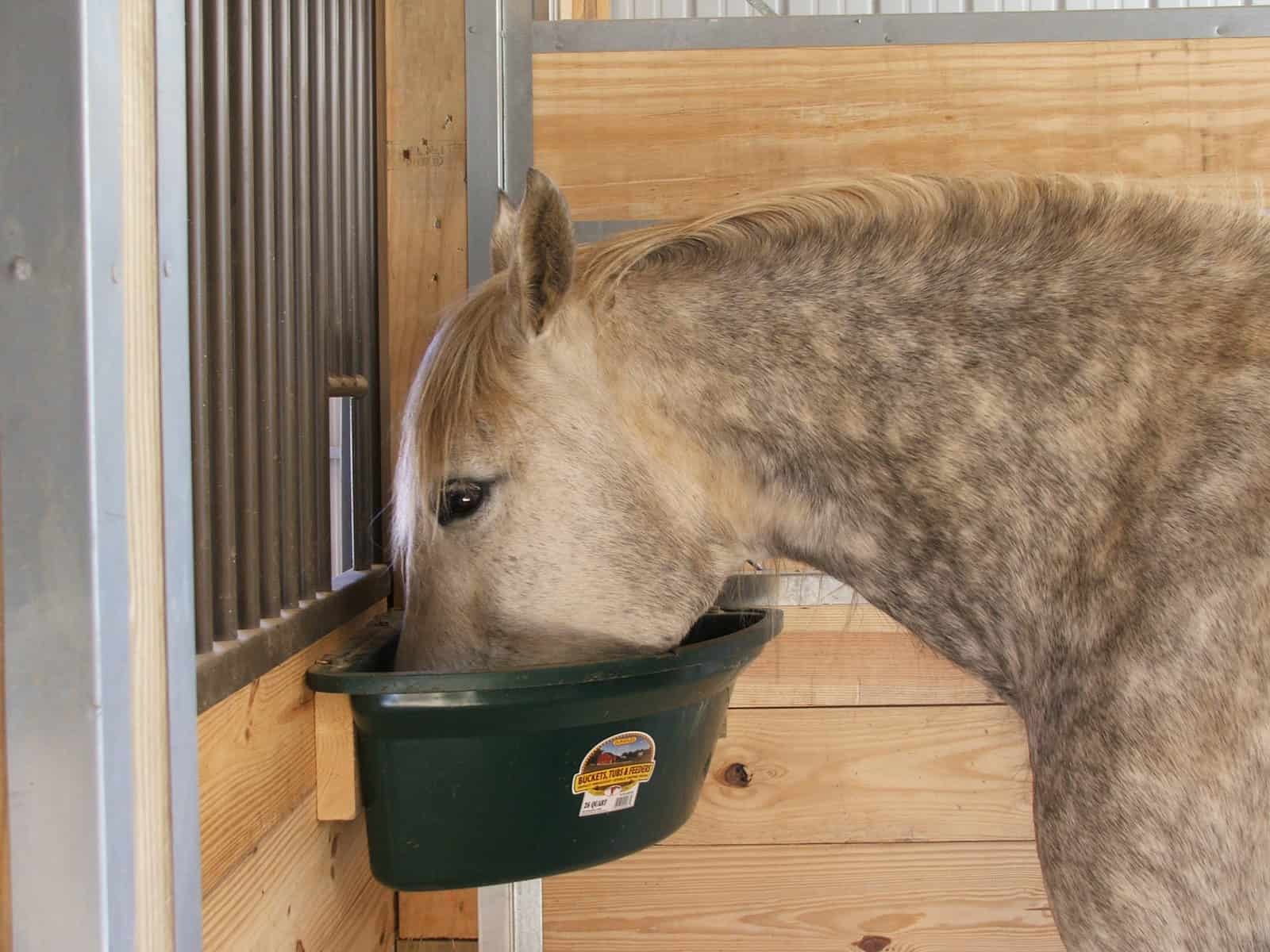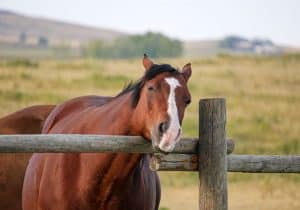Feeding the Picky Pre-PPID Horse
- Posted by Clair Thunes, PhD

A: I suspect your horse finds the hay more appetizing than his balancer pellets and supplements, or he feels some need to move on and eat his hay. You don’t mention whether he is already insulin resistant (IR) or what form the supplements are in (pelleted or powder), but I assume that the supplements are powders and that you want to keep his feed’s nonstructural carbohydrate (NSC) level low even if he is not currently IR. Feeding powdered supplements in pellets is always hard, because the powder just falls through. I have definitely had issues with some horses not finding the lower-NSC balancer pellets particularly appetizing.
There are a number of things you can try. Some commercial balancer pellets have added flavors that make them more appealing, so changing balancer pellet is one option. Another easy thing to try is adding a small amount of water to the pellets so the powdered supplements stick to them. Or, instead of adding water to stick the supplements to the pellets, try adding a small amount of either camelina oil (which has a nutty flavor horses seem to enjoy) or a commercially available oil supplement designed for horses. Other liquid additions you could try include apple cider vinegar that contains “the mother” (the beneficial microbes that make vinegar), aloe vera gel, or a sugar-free liquid flavoring. Some equine supplement companies sell apple or peppermint sugar-free, IR-safe liquid flavorings.
Some horses really like the taste of salt, so adding table salt to the feed might help. Work your way up slowly to 2 T a day or 1 T per 500 pounds of the horse’s body weight. Adding salt is a good thing to do regardless of whether a horse is a picky eater.
Adding something succulent to the feed might also help—try celery sticks, fresh carrot peelings from last night’s dinner, or apple peels or cores. Anything fresh is enticing and might help.
Another option is to mix the supplements with a textured feed that’s appropriate for horses with metabolic conditions. For example, some senior feeds are textured and low NSC. Often they contain loose beet pulp, which horses enjoy. You could also try a small amount of soaked molasses-free beet pulp to improve taste and stick everything together; however, not all horses enjoy soaked beet pulp.
Sugar-free applesauce in small quantities should be okay, and this is a popular option. If he’s eating the balancer pellet and just leaving the supplements, you can also mix the supplement in unsweetened applesauce and syringe it directly into his mouth the way you would administer a paste dewormer.
You could also try feeding his supplements at another time of day so he doesn’t have to make a choice between eating his hay or finishing his pellets and supplements.
Good luck!

Written by:
Clair Thunes, PhD
Related Articles
Stay on top of the most recent Horse Health news with
















One Response
What is pre-ppid? How is it diagnosed? How is it treated. I’m sure my horse had ppid 6 years before diagnosis.